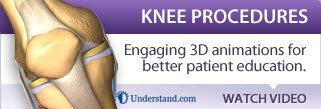Patellofemoral (PF) pain, is pain in, behind or around your kneecap (patella; see Figure 1). You may get pain when the kneecap moves differently from usual. The cartilage covering the bones in the area behind the kneecap – known as the PF compartment – may also be damaged.
PF pain is the most common problem in knees. As many as one-third of all patients who visit an orthopaedic specialist for knee pain will have PF pain.
When a patient with PF pain is asked to point at where it hurts, the patient most often grabs the whole knee and says that the pain is in the front of the knee, somewhere around the kneecap. It is often difficult to localise a more specific point than that.
Most patients with PF pain say that the pain gets worse when going downhill or down the stairs. Some patients also say that pain also increases when going uphill or when sitting with the knee bent for a long time.

